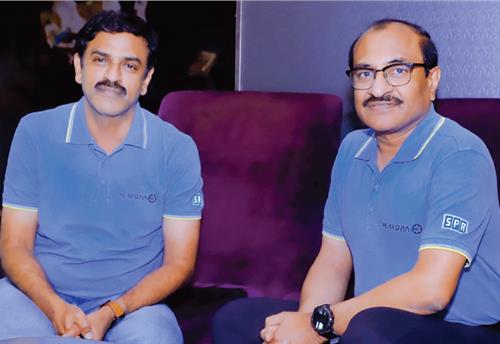Shanghai surprise
Rarely in automotive history have there been such strong and obvious signs that the world has changed as was evident at the Shanghai Auto Show 2009 held from April 20-28.
In the space of a few days we realised that the Shanghai show will henceforth be the car-show capital of south-east Asia, equal to anything in Europe or the USA. The Chinese car market is also now on course to eclipse that of the US in 2009, instead of 2017 as previously predicted. China has become a hub for modern car creation, spurred on by a buyer body whose sophistication has grown even more quickly than its size. China is now a car leader, not a follower.
The European manufacturers know this, too. Porsche chose this place to launch the controversial Panamera, simply because Shanghai stands for open-mindedness. Land Rover chose Shanghai to reveal versions of its three biggest models, which might have drawn as much irksome criticism in Europe for their continuing lardiness as praise for their more efficient engines and greater luxury and quality. BMW also chose Shanghai to show M versions of its X5 and X6 (the X5 M for the first time), plus the extended wheelbase BMW 7-series; all big cars. And, Rolls-Royce revealed the name of its forthcoming, slightly smaller and sportier model, the Rolls-Royce Ghost.
However, the real fascination is in the scarcely believable progress of home-grown models. SAIC and Nanjing Automotive have amalgamated into a new Chinese-based MG Rover. This year’s offerings were an MG6/Roewe 550 (an attractive reworking of the old MGZS) plus an all-new and very pretty MG concept called N1, which is a slightly smaller saloon tipped for production next year. The N1 concept on display was packed with Magnetti Marelli electronic displays and net-connecting gizmos, but there was no doubt that the real point of the car was that it carried the architecture for a neat and sporty production saloon. If the formerly British MG Rover had been able to produce such a car, it might have succeeded.
Meanwhile Shanghai GM’s Pan Asian Technical Centre (Patec) produced a new Buick-badged luxury MPV proposal, not for production, but to advertise the extent of its capabilities. Two years ago some of us toured this place, and while the incumbent engineers were amiable and conscientious, it was obvious that Patec was considered better at doing long-winded exhaust emissions tests than creating new cars. Again, much has changed. The car was rather flamboyantly styled, but its practical flat floors and sumptuous six seats made it look a workable concept.
None of this is to suggest that every home-grown product at Shanghai this year was an inspiration. It was not. Frequently, impressive engineering was ordinarily clothed. Just as it sometimes is at Geneva or Frankfurt. But the base standard has improved out of sight. Once a generator of some laughable design projects, China’s baseline is competence and believability. Where will it be in another two years? Ironically, one of the Shanghai show’s craziest projects was arguably its most expensive. As part of a huge leap forward that included the launch of three sub-brands (Gleagle, Emgrand and Shanghai Englon), the aggressively expansionist Geely brand produced an ungainly Rolls Phantom pastiche – though not a copy. It was so unoriginal and lacking in gravitas that it drew smirks from onlookers, virtually the only car at this year’s show to do so.
Interestingly, no-one quibbled about Chinese quality. Cars from this part of the world used to be the butt of jokes on that score, but this year no-one raised the subject. Even the cartoon Rolls was well enough put together. Where the Chinese need to progress, though, is in branding and naming. To find the JAC Company, I had to resort to looking at the show site plan, so poor was the signage on cars and stand. When you find them, some names can still be comical. Chery’s two new sub-brands are Riich and Riily. Great Wall’s baby car was called the Gwkulla and its Fiat Panda-style ontender is the Gwerpi. Gwerpi – who thought of that one?
Radical, the racing car maker had a big stand at Shanghai. So did Lotus, albeit with cars from the Proton parent more in the foreground than Elises and Evoras. The truth is, China’s market is now vital to any exporter. This country is becoming the engine-room of world motoring more than ever, its car creators and customers are no less discerning – and far more influential because of their numbers – than we are. Time to prepare for change and hold on tight.
RELATED ARTICLES
BRANDED CONTENT: Eliminating the worries of battery charging with smart solutions
The charging infrastructure is the backbone of electric mobility but is also one of the key perceived barriers to EV ado...
The battery-powered disruptor
Greenfuel Energy Solutions is planning to shake up the EV battery market with the launch of a portfolio of specially eng...
SPR Engenious drives diversification at Shriram Pistons & Rings
The engine component maker is now expanding its business with the manufacturing of motors and controllers through its wh...





 By Autocar Pro News Desk
By Autocar Pro News Desk
 06 May 2009
06 May 2009
 2756 Views
2756 Views









